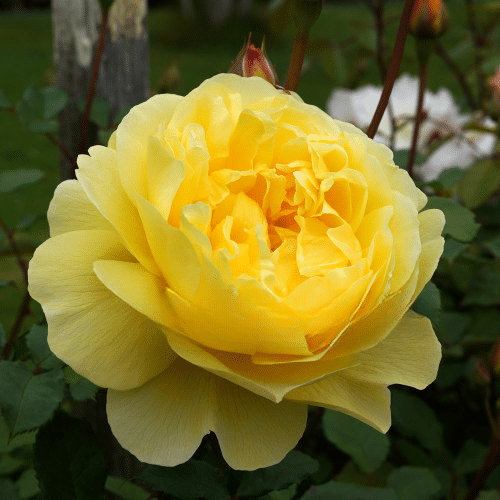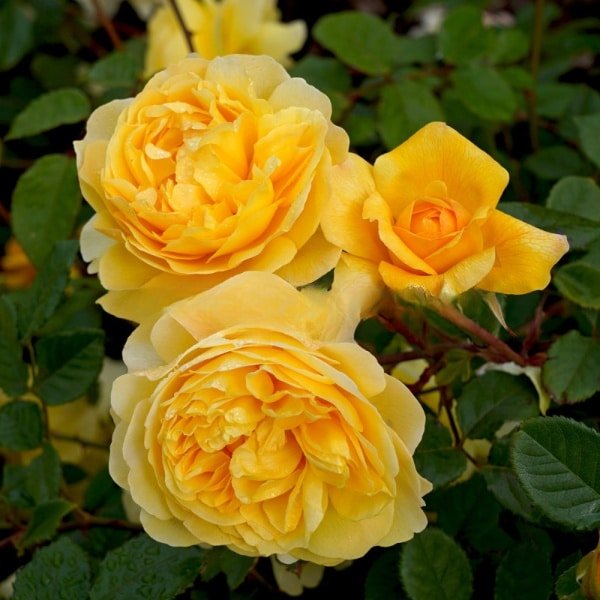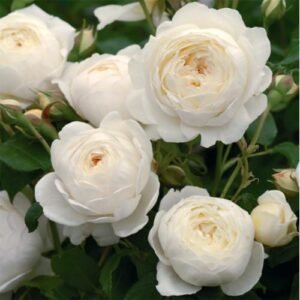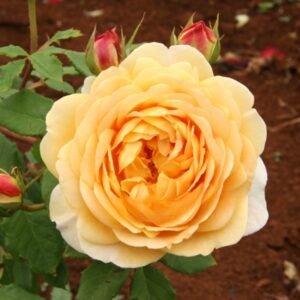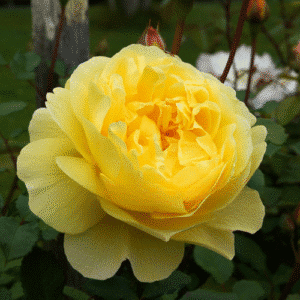‘The Poet’s Wife’ is a stunning English rose bred by David Austin, known for its superb garden performance and brilliant colour. It produces an abundance of large, deeply cupped blooms of a rich, vibrant yellow. As the flower matures, it opens to reveal a cluster of stamens and a lovely rosette shape. The most notable feature of this rose is its wonderfully strong, sweet fragrance with a hint of citrus and lemon peel. The plant has a healthy, bushy, and rounded growth habit with glossy green foliage. It’s a truly reliable and beautiful rose that performs exceptionally well in Australian conditions.
Usage This rose is a perfect choice for adding a bright, sunny colour to a garden, and its compact size makes it ideal for planting at the front of a border or in a dedicated rose bed. Its strong perfume means it’s best placed near a path or seating area where you can enjoy its scent. The beautiful, full blooms are also excellent for cutting and creating stunning, fragrant bouquets for a vase. It can also be grown successfully in large pots and containers.
Care Tips
- Sunlight: Plant in a spot that receives full sun (at least six hours per day). This is essential for encouraging a profusion of blooms and maintaining a healthy plant.
- Soil: Prefers rich, fertile, and well-drained soil. Amend the soil with plenty of organic matter, like compost or well-rotted manure, before planting.
- Watering: Water deeply and regularly, especially during the dry summer months. It’s best to water the soil at the base of the plant to keep the foliage dry, which helps to prevent fungal diseases.
- Fertilising: Feed regularly throughout the growing season (spring to autumn) with a fertiliser formulated for roses. A slow-release granular fertiliser in early spring and regular liquid feeds will encourage a strong, continuous bloom.
- Pruning: Prune in late winter or early spring to shape the bush and remove any dead or weak stems. You can also ‘deadhead’ spent flowers during the season to promote repeat blooming.
- Pests & Diseases: This rose is known for its excellent disease resistance, but it’s still a good idea to monitor for common rose pests and diseases. Good air circulation is a key preventative measure.

